Antique spinning wheel identification can be challenging for modern people. Most models look similar, but you need only simple training to learn how to recognize different types used in various regions.
Luckily, some enthusiastic craftspeople give their best to keep this tradition alive, so you can talk to them when finding one spinning wheel or decide to buy one. It is crucial to determine its type, condition, and value before shopping.
Table of Contents
Spinning Wheel History
The spinning wheel’s origin is not clear. Historians believe that the first model appeared in China in 1030 AD, but some found traces of its existence in ancient Egypt.
Unconfirmed data show that it appeared in India somewhere from 500 to 1000 AD. Anyway, you can find the first model drawn in 1035 AD.
By the 13th century, this valuable item became standard equipment for European spinners spinning yarn from raw fiber. Spinning became more continuous and faster after adding a flyer and bobbin in the 16th century, probably in the 1530s, and a foot-pedal in the 17th century.
Once the fiber production in Europe changed from hemp to cotton and the power loom was constructed in the late 17th to early 18th centuries, spinning wheels became useless.
On the other hand, hand-spinning was popular in America before American Revolution, and Americans continued using spinning wheels by the 19th-century. Nowadays, hobbyists and craftspeople who enjoy traditionally making fabric still use these items. However, they are often only decorative pieces in homes and offices.
Antique Spinning Wheel Parts
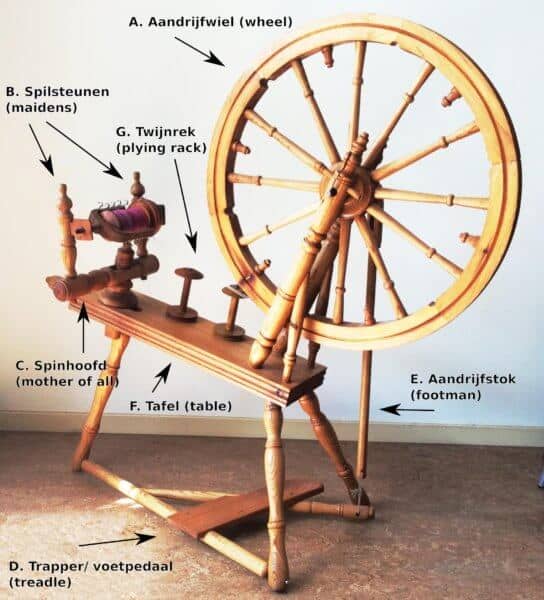
Spinning is a way of twisting wool to get a continuous string or yarn wound onto a stick for later weaving. To complete this process, women used a spinning wheel featuring a spindle assembly and a revolving wheel.
Artisans typically used oak, beech, maple, walnut, pine, and sometimes yew to make this helpful item. It features a few parts, and their lack indicates the spinning wheel’s age, condition, and style.
Drive wheel (flywheel)
This wooden part stored energy, regulated the speed, and kept the spindle in motion. Since it was attached to the axle by a belt, spinners increased and decreased the wheel turning speed by adjusting its tension.
Drive band
It was a leather or fabric loop attached to the drive wheel and flywheel, and it was necessary to keep it tight to work correctly. For instance, loose drive bands easily slip and disable wheel rotation, while too tight drive bands could break the spinning wheel.
Mother of all
Mother of all was the main wooden shaft running through the spinning wheel center. It supported other wheel parts and kept the construction in alignment.
Treadle (pedal)
This part was a platform for a spinner to stand on while using the spinning wheel. A series of belts connected the treadle with the wheel, allowing power to transfer from the women’s feet to it and spinning the flyer spinning the yarn.
Flyer and bobbin
The flyer was a tiny wooden disk with grooves attached to the spindle that helped the yarn to twist. The bobbin was a cylinder attached to the flyer that primarily held the twisted yarn. Their purpose was to allow making a consistent thread.
Maidens
The purpose of these vertical bars was to allow the spinning wheel regular function by holding the flyer mechanism in the right place. Besides, its appearance always added to an antique spinning wheel’s aesthetic appeal.
Orifice
It was the part placed at the wheel top intended to feed the thread through. You can recognize its two parts, the guard with a small center hole for the thread and a small, knob-like head. They need to fit together to allow quick threads passage.
Antique Spinning Wheel Identification
Since not all old things are equal, you should always check whether the spinning wheel you want to buy is an antique. Plus, it will cost differently, depending on a few crucial features. Let’s see.
Age
Once you find an antique spinning wheel, you can determine its age by the built-up lint or even grease in the orifice since most women didn’t clean those parts thoroughly.
If this particular piece was regularly used, you could see a groove at the orifice where yarn passed through during wool spinning. Plus, old pieces often have worn flyer hooks, and they are usually grooved and sometimes broken.
Condition
Even though spinning wheels were created to last, you can see more or fewer traces of wear when inspecting them closely. Unfortunately, you can often notice cracks on wood or even missing or broken pieces while some items are repaired, decreasing the item’s value.
A spinning wheel without a foot pedal or spindles will cost less than a piece in excellent condition. Be aware that even a minimal restoration can cost you $100 to $200. Replacing or fixing more parts will be even more expensive.
Type
You can find three primary speeding wheel types, including:
- Irish tension (single drive with bobbin lead)
- Scotch tension (single drive with flyer lead)
- Double drive
Craftsmanship
Always check the overall wheel design since its change is evident after years of use. You can determine spinning wheel age by its style and general shape in most cases.
Handmade pieces are never perfect so you can notice slight differences in diameters and wheel appearance. The first machine-cut pieces with a symmetrical and uniform design occurred on the market after 1860.
Construction
Most artisans pay particular attention to details when creating old handmade spinning wheels. Therefore, you can see the intricate carving on the surface and ornaments on the wooden spindles.
Sloppy craft-made and machine-made items are never beautiful and complicated. On the other hand, handmade pieces are typically asymmetrical due to imperfect handicraft methods used in old times.
Materials
The first spinning wheels were always entirely made of wood. However, craftsmen added some metal or plastic parts to newer models, so you can use this information to differentiate the antique spinning wheel construction from contemporary pieces.
Finish
Before the mid-1800s, people used clear shellac as a spinning wheel finish, while some old pieces had a painted or oil finish. After that period, these spinning wheels were finished with varnish or lacquer, making their dating easier.
Rarity
As always, rare spinning wheels will be pricey, particularly well-preserved antique ones. Not many celebrities use this item in everyday life, but those connected with historical figures or events will cost a small fortune.
Makers’ mark
In most cases, local artisans created spinning wheels, and they typically didn’t brand their products. Therefore, you can’t find the maker’s mark on the first items in most cases.
Maker’s marks on the treadle or table underside indicate that the item you look at was produced in the 1800s. Jesse Truesdell created the most valuable spinning wheels from 1815 to 1855, marked with J. Truesdell.
Other options include Farnham wheels made in the 1800s with a market burned into the wheel tabletop or side and E.S. Williams pieces.
Antique Spinning Wheel Styles
For centuries, people used spinning wheels to turn raw fibers into thread or yarn. Even though their look is more or less similar, you can recognize a few styles typical for particular countries or regions.
1. Saxony (Cinderella) spinning wheels
This spinning wheel type developed in Saxony, German, was the first with bobbins and a treadle. Historians believe that the first models with horizontally arranged elements, a large wheel, and three legs appeared in 1533.
It was effortless to operate, making it an excellent choice for beginners. Skillful women could produce fine- to medium-thin yarns by using this model.
2. Norwegian spinning wheel
Besides a bench frame and four legs, Norwegian spinning wheels are similar to a Saxony model. Women used them to produce both fine wool and linen while comfortably sitting.
Since this model was relatively small, it was stable, portable, and convenient. Unfortunately, it wasn’t a piece of choice for novices.
3. Flax spinning wheel
This spinning wheel was an excellent item for spinning flax plant’s hair-like fibers into linen thread. This complex process was rare in the US, so this spinning wheel type is not common in this area.
4. Charkha spinning wheels
This traditional tabletop spinning style originated in India and is considered the oldest spinning form. It didn’t require a flyer and bobbin to make the most delicate possible fabrics like angora, cashmere, silk, cotton, and khaddar.
Women could have folded this compact item into a box and effortlessly transported it whenever needed. The most famous model belonged to Gandhi. Nowadays, this spinning wheel is a desirable decorative piece.
5. Irish castle spinning wheel
This model had a different construction, with the flyer placed above the wheel. Such a design took up less space, making it practical. The model came with three or four legs and different speed ratios that allowed the yarn twists number control.
6. Walking wheel (great wheel, wool wheel)
This spindle wheel model with disproportionately large wheels forced women to stand while working. It appeared in Europe in the Middle Ages and became popular in the American colonies, where it was in use until the 19th century.
The great wheel came with heavy wooden construction without a treadle or flyer and could be used for spinning wool, cotton, and flax.
7. Spinning Jenny
James Hargreaves invented this large spinning wheel type with multiple spools and a hand crank in 1764. It was the first machine used in the textile industry and was a huge step toward textile industrialization.
Antique Spinning Wheel Value
Most old spinning wheels are typically inexpensive, including antique pieces. You can buy one for approximately $100 to $400, while rare items in excellent condition can reach a price of $600 to $850.
On the other hand, some unique pieces can be costly. For instance, the Charkha spinning wheel used by Mahatma Gandhi was estimated at $75,000.
Antique spinning wheel value |
|
| Antique spinning wheel style | Price |
| Large yarn winder wheel spinning wheel | $850 |
| Primitive spinning wheel | $600 |
| Dutch spinning wheel from 1850 | $395 |
| Primitive spinning wheel | $325 |
| Primitive spinning wheel | $325 |
| Dark wooden spinning wheel | $275 |
| Victorian spinning wheel from the 1800s | $263 |
| Wooden spinning wheel with a green mark | $250 |
| 19th-century Imperial Russia spinning wheel | $244 |
| Ornate wood castle-style, 38 inches (96.5 cm) high spinning wheel | $225 |
| Saxony spinning wheel | $215 |
| Wood spinning wheel from 1885 | $200 |
| Victorian, 38.5 inches (97.8 cm) high spinning wheel from the 1800s | $200 |
| SWIFT winder wood spinning wheel | $200 |
| Spinning wheel of 21.5 inches (54.6 cm) | $200 |
| Victorian spinning wheel of 32 inches (81.3 cm) from the 1800s | $183 |
| Primitive Norwegian spinning wheel | $165 |
| Wooden spinning wheel | $160 |
| Antique spinning wheel | $115 |
| Miniature, wood-carved 11 inches (28 cm) high spinning wheel | $59 |
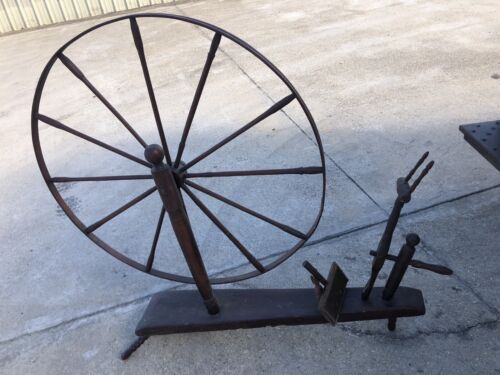
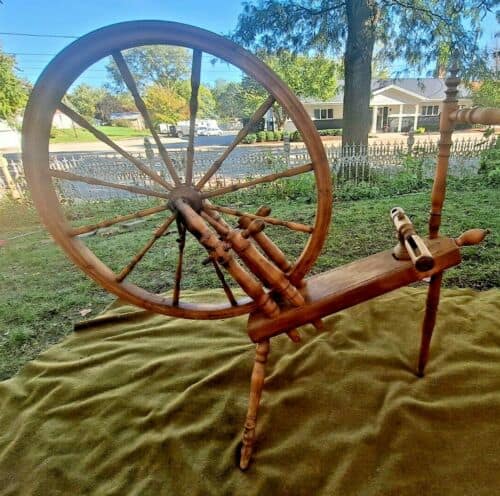
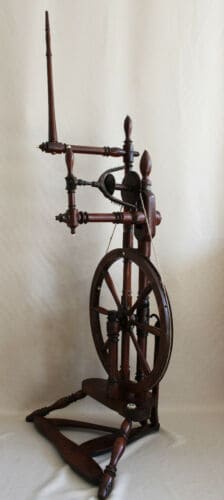
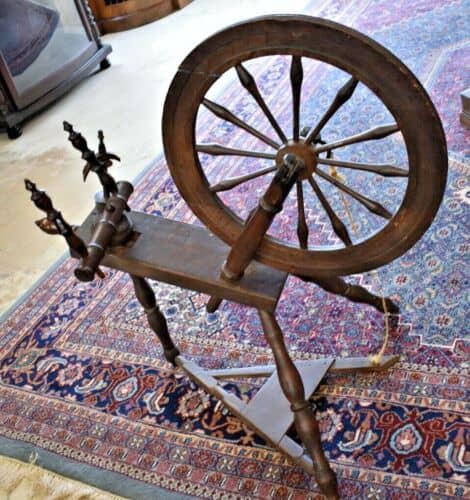
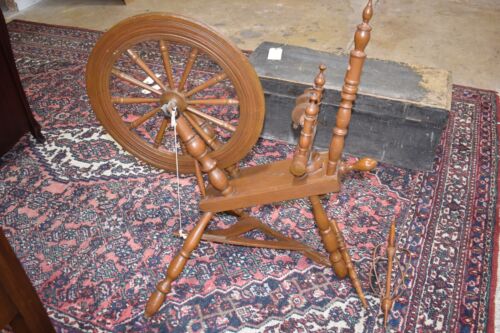
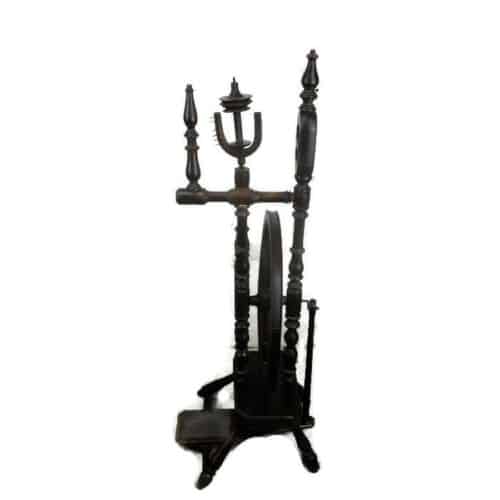
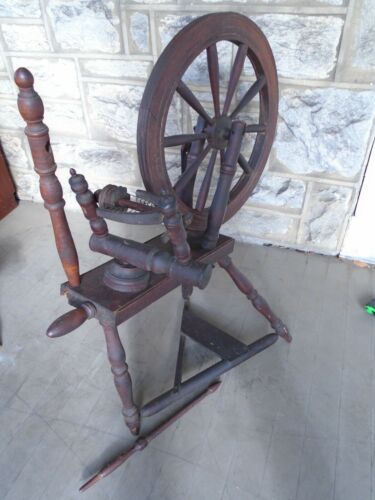
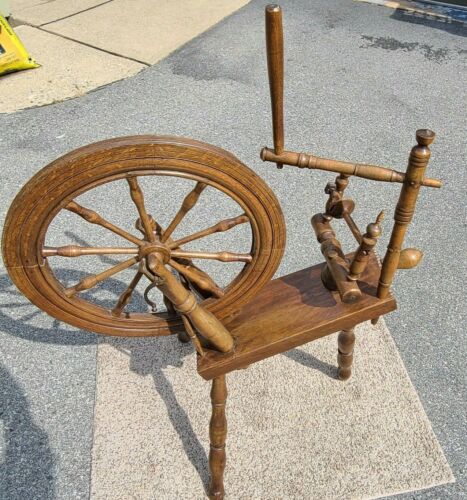
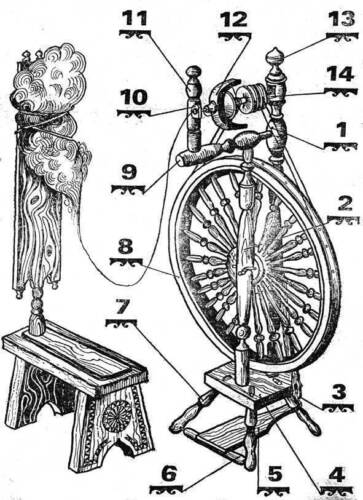
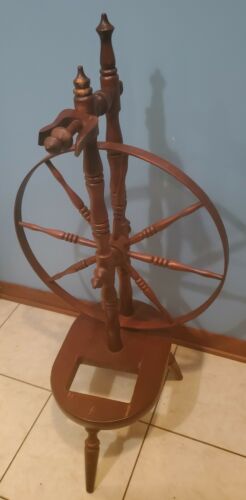
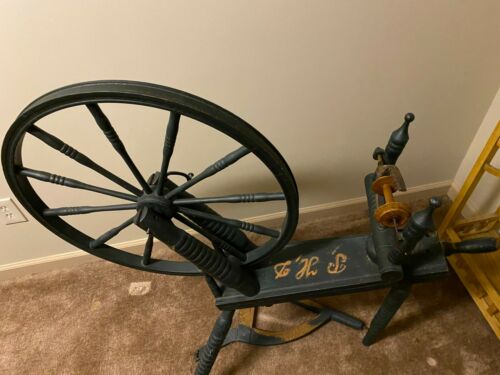
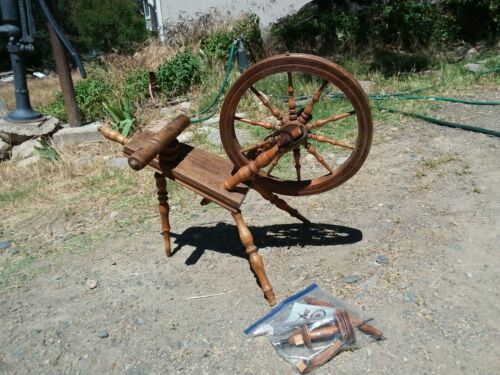
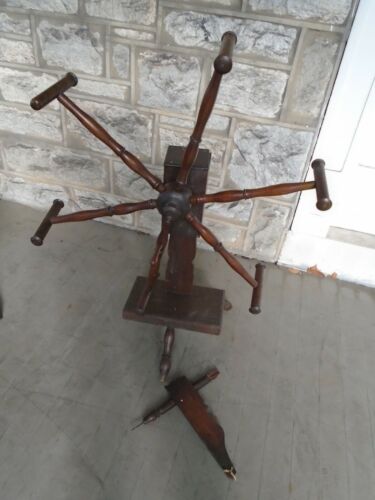
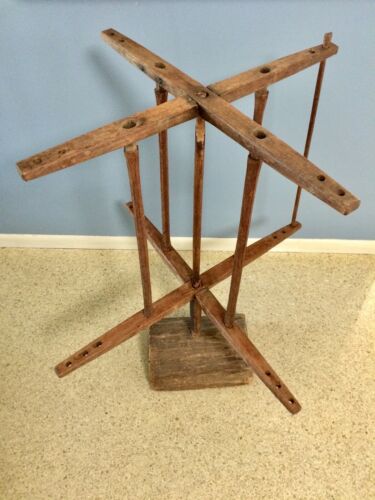
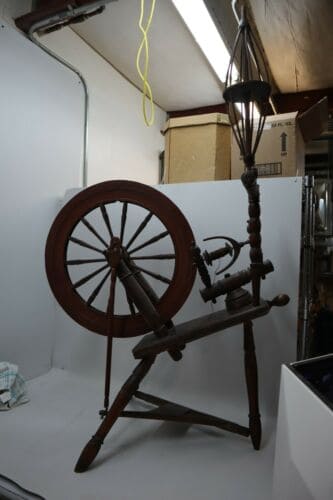
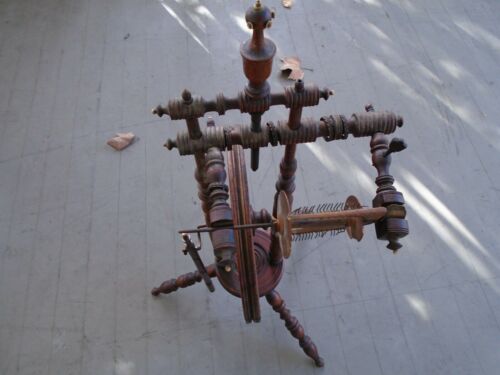
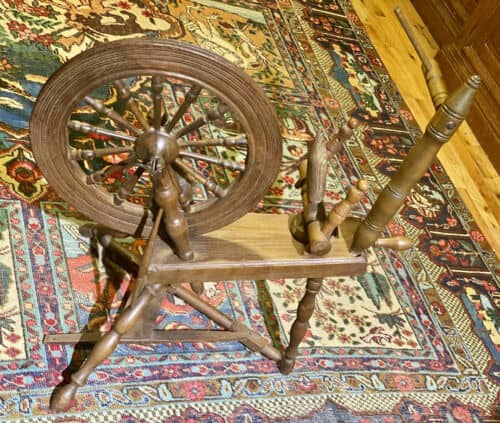
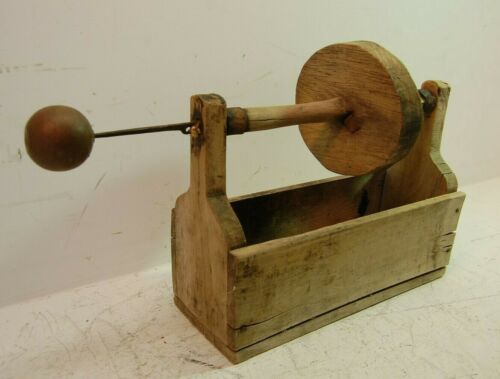
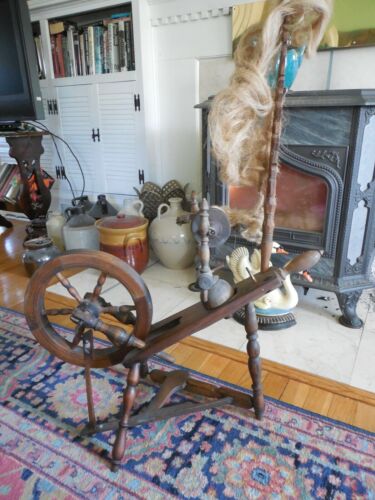
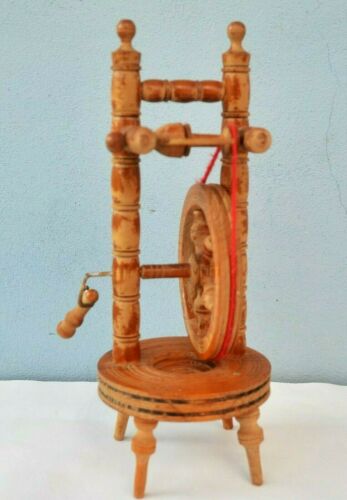
The best way to check your spinning wheel value is to ask an expert in an auction house or antique store. Plus, there are numerous free websites like InstAppraisal or Country Living Magazine for checking.
Tips for Buying Vintage Wheels
Finding the well-preserved antique spinning wheels is often challenging. Therefore, you should do your homework before buying the desired model.
Educate yourself
The first step is to learn as much as possible about spinning wheel styles and construction. It is crucial to recognize original parts and notice their absence. Always inspect the wheel thoroughly and check whether functional parts are connected appropriately.
Check for necessary repairs
An antique spinning wheel is considered an item in working order only when it contains the flyer and spindle. If you plan to use it but can’t find a complete item, it is better to pick out the one with a broken flyer than a wheel without this part. It is possible to fix it, but finding that part in the current market can be tricky.
Never buy a piece with severe damage to the drive-wheel hub. Then, test the tension screw on a traditional-style model to check whether the spinning wheel works. Since it is not possible to replace flyers on antique items, you should consider only the ones with original parts.
Check the wood
You should avoid a spinning wheel with visible tiny hole clusters that are a sure sign of woodworm infestations.
Summary
Nowadays, many people enjoy the antiques and want to bring a part of history into their everyday life. Be aware that a beautiful antique spinning wheel deserves to be on your list. However, always check available models and their condition before buying one.
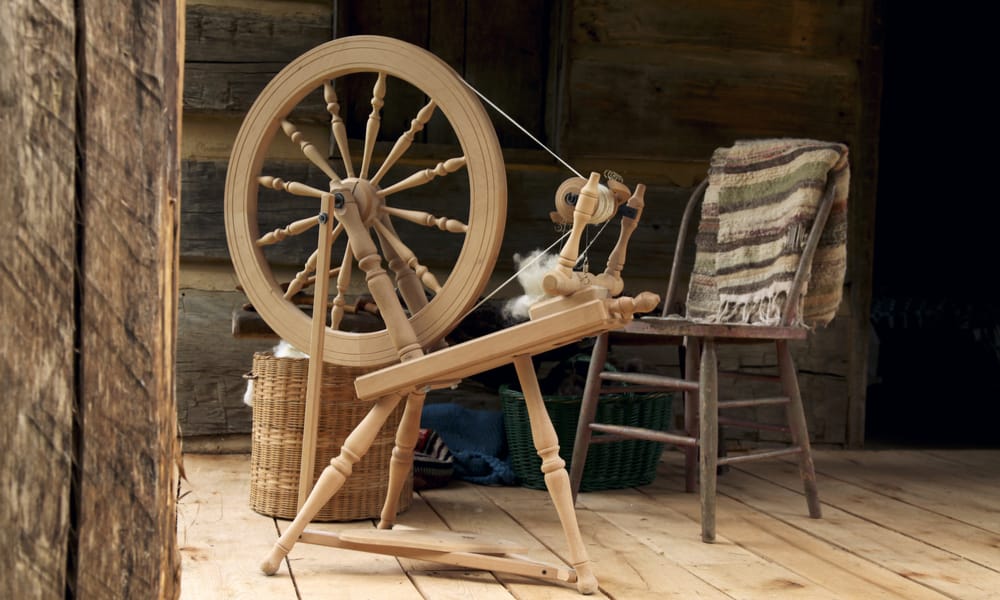
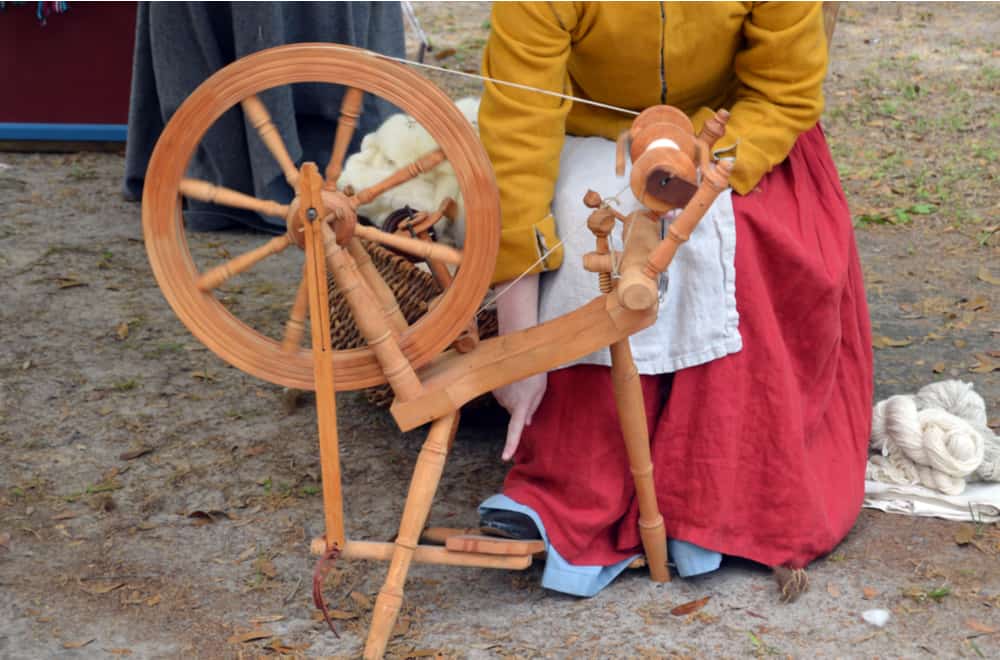
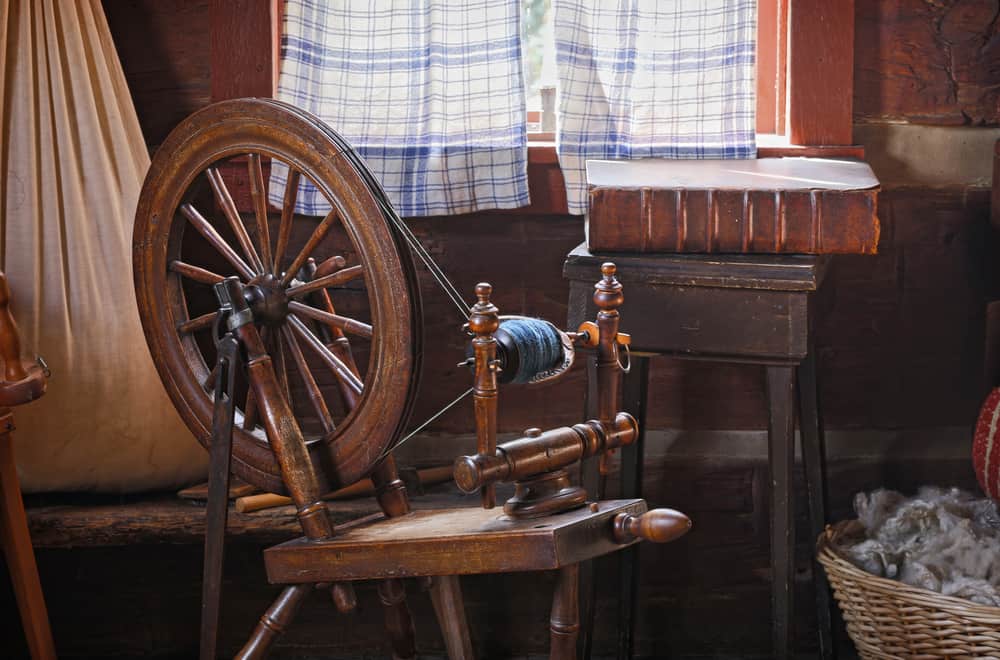
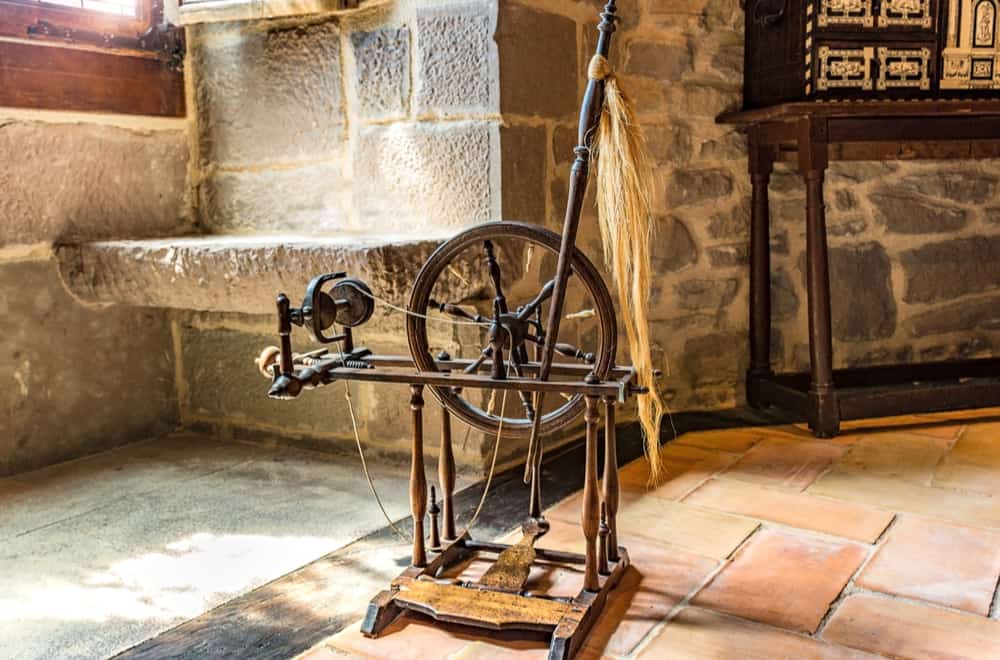
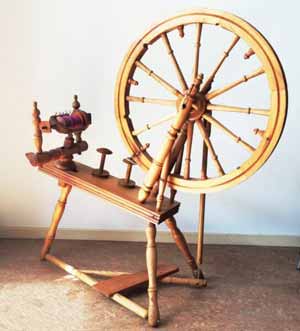
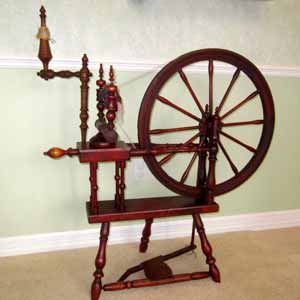
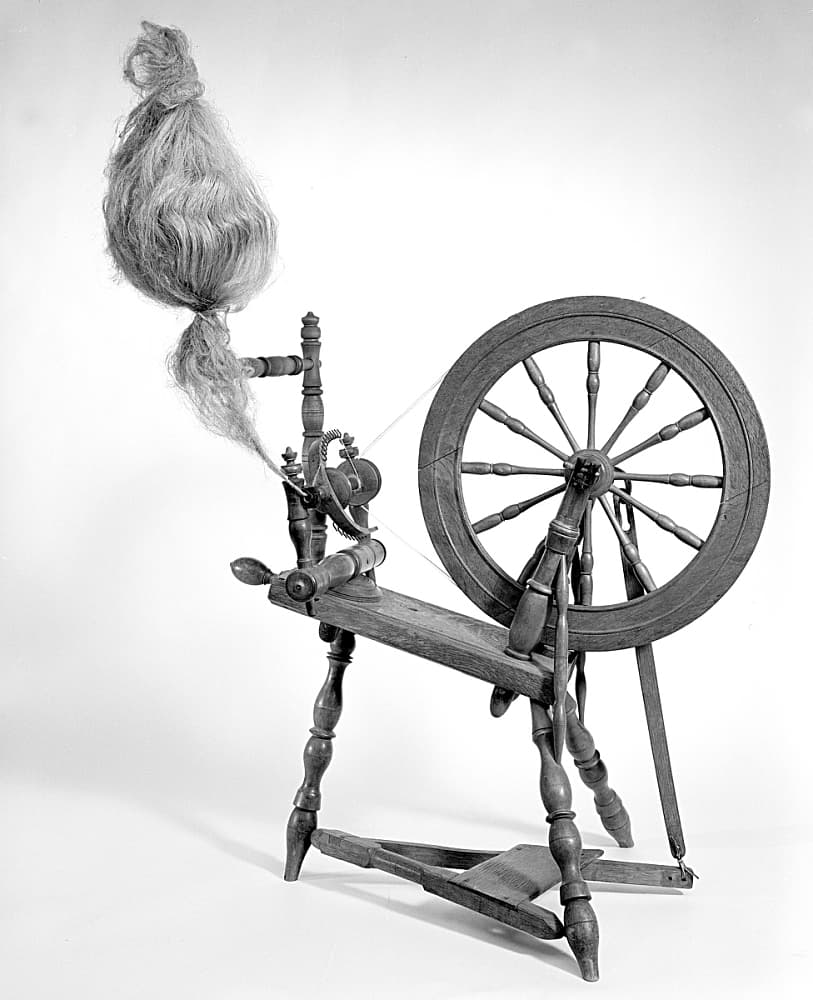
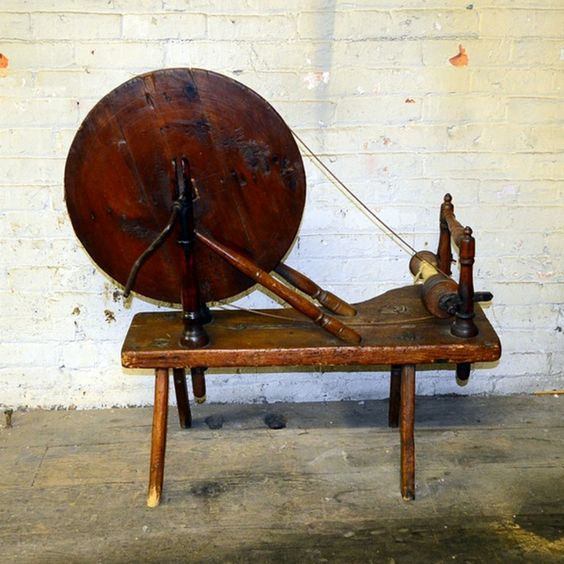
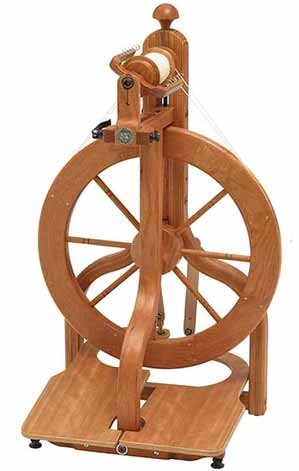
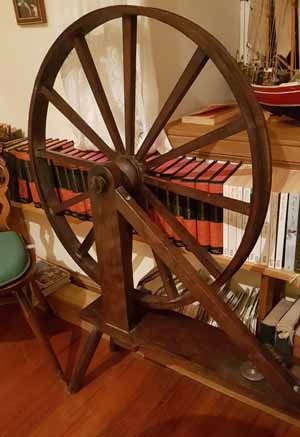
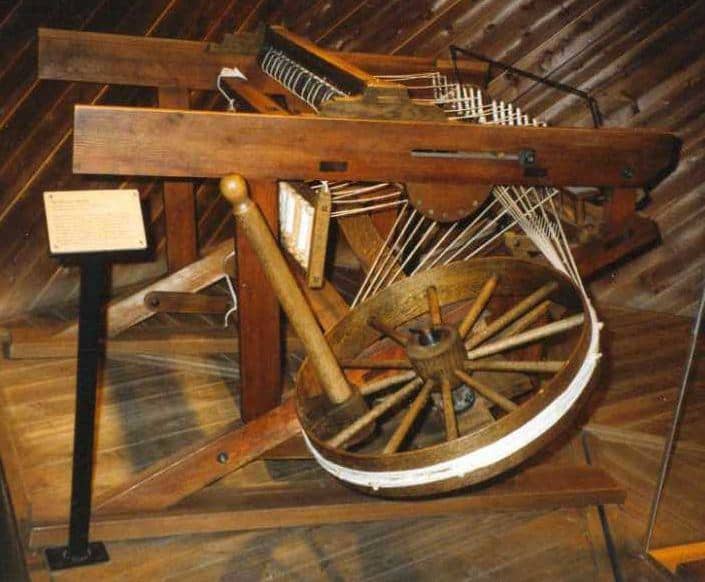
I have a spinning wheel that says either CR or GR Logan. That is in perfect condition. Just wondering what the time period might be